Anglers Booking Team
The expert copywriters at Anglers Booking have meticulously crafted this article. Our dedicated team of writers provides valuable insights and information to enhance your angling experience.
 12 minutes read
12 minutes readFishing in Steinhatchee is not just a casual swing at the day's catch but a journey into the heart of a charming town that far exceeds its modest size in terms of the fishing adventures it offers. Time and space are often relative in human experiences, and Steinhatchee is generous to anglers.
Tucked into its unobtrusive shores and surroundings, you will awaken the spirit of ancient anglers, for once, in the domain of Indian tribes, the heritage base in Steinhatchee remains. This unique blend of history and nature makes fishing in Steinhatchee a genuinely intriguing experience.

Our guide intrigues you further, developing a veil of mystery that testifies to Steinhatchee's accessibility and beauty.
So, from the vast reaches of Deadman's Bay to the winding currents of the Steinhatchee River, join us in a fishing exploration of a unique abundance of marine and freshwater species. Fellow anglers, let's dive in!
When you see the abundance of fishing opportunities in Steinhatchee, the ever-inquisitive angler's big smile will spread across your face! The variety of fish species here is truly remarkable, and while you probably won't catch them all, you will catch something, that's for sure! Keep reading to get to know them better.
Not all fish species available on the Steinhatchee fishing table are always equally present, but native species are, although, of course, by their cycles. Discover below how and where they live, as well as which techniques are the most effective for catching them.
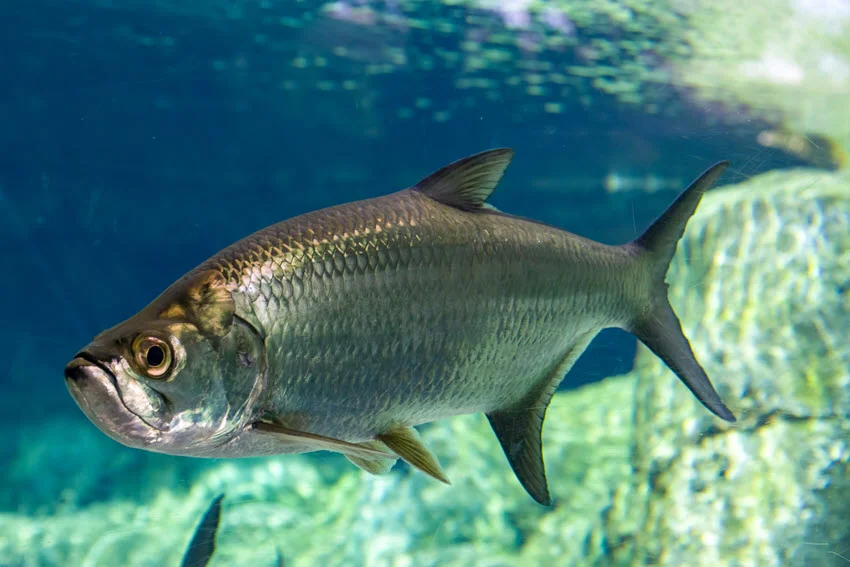
If fish have consciousness, many species would be jealous of all the attention the Tarpon gets, and thus, they often deserve to be returned to the water after the catch! In Steinhatchee, the Tarpon is one of the favorites. It is a magnificent fish with silvery scales and a distinctive, elongated body, often weighing over 100 pounds. You'll find them around estuary and coastal waters, particularly favoring areas with strong tidal currents.
The peak season in the Steinhatchee usually runs from May to August. Tarpons are traditionally caught by casting live or artificial baits, such as mullets or crayfish, or by using baits like swimbaits and topwater plugs. The essence lies precisely in presenting a well-crafted bait while cruising or rolling Tarpon, tempting strikes with timely extraction. The Tarpon will ignite your fishing passion if you plan to release it or keep it as a trophy.
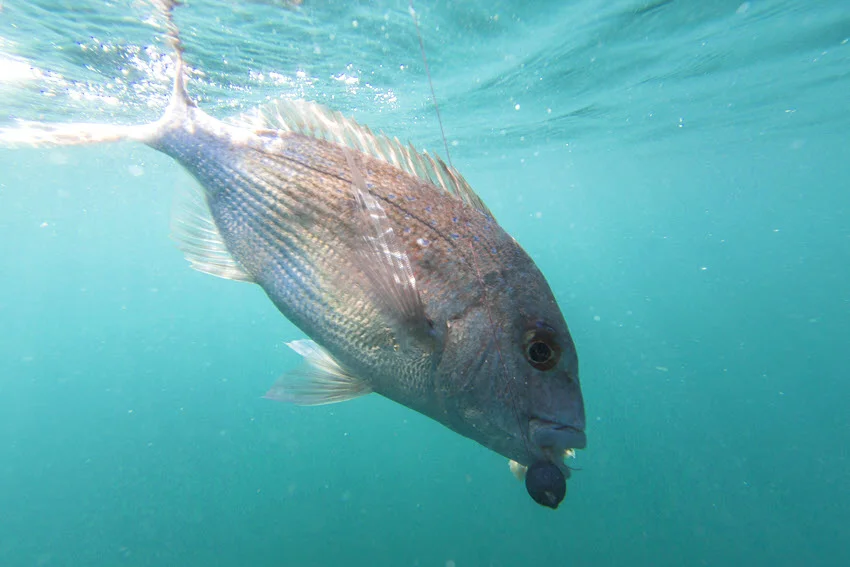
Snappers are lively fish, especially when fighting, and their bodies have fascinating colors and patterns. Their meat is also considered a delicious delicacy. Species such as the Robin, Mangrove, and Deer often visit coastal habitats, and in addition to their color, they are characterized by a robust build and cunning behavior. Typically ranging from 1 to 2 feet in length, these fish can weigh up to over 20 pounds.
You'll usually find Snappers on rock outcroppings, reefs, and underwater structures, and they are available year-round. However, the primary fishing season in Steinhatchee is typically from June to July. Anglers use minnows, cut bait, and jigging with artificial lures. Whether fighting Snappers for the meat, the thrill, or both, Snappers are almost inescapable at Steinhatchee.
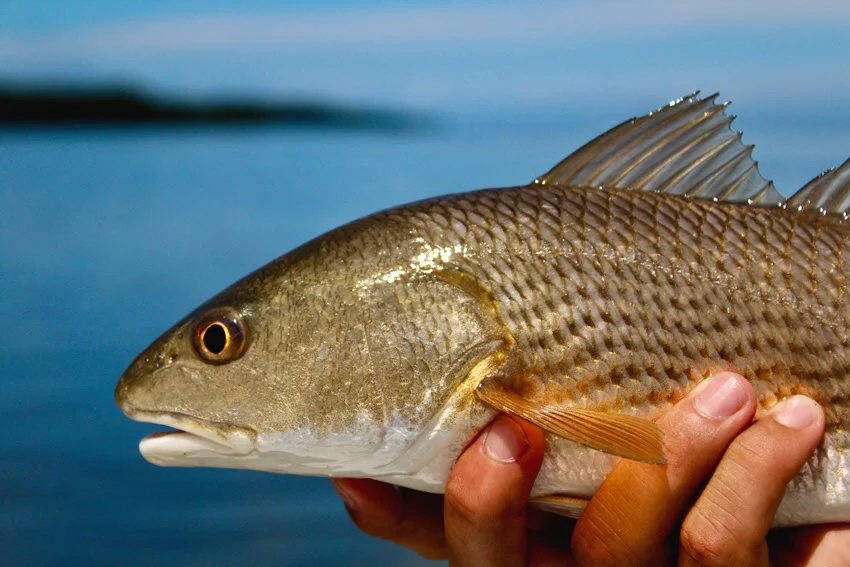
If something near the shore shimmers reddish, you can almost be sure it is a Redfish. A common species in Steinhatchee waters, they are prized for their powerful strikes and fighting spirit. They are hard to miss because they have a copper-red body shade and a distinctive black spot near the tail. They vary significantly in weight, making them accessible to anglers of all levels, but rarely exceed 40 inches in length.
Redfish love swamps, flats, and estuaries, areas abundant in shrimp, crabs, and small fish. They are available year-round in Steinhatchee, but the main seasons tend to coincide with the cooler months of the year. They are generally caught by casting live and artificial baits, fly fishing, and even by bait fishing. Shrimp or mullet, and artificial baits such as soft plastics and topwater plugs, are common bait choices.
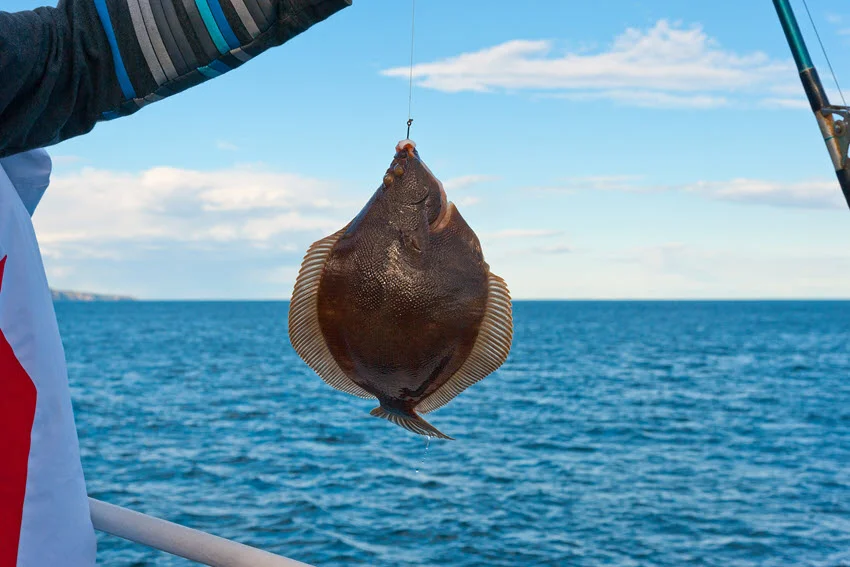
Flounder is always somehow on the border of mystery and humor, primarily reflected in its camouflage abilities. Flounder easily blends in with its surroundings, especially with the seabed, and changes color quickly. It also has meat with a wonderful flavor and a flat body profile with eyes on one side of the head. In addition to the sandy bottom, you will also find the sandy bottom near the structure.
Flounders often range from a few pounds to over 20 inches long and can be encountered year-round. However, the peak season is in the warmer months, when they migrate to shallow coastal waters and estuaries to spawn. According to its preferred habitat, it is best to fish for bottom fish with live bait such as slime or shrimp, or drift with jigs or soft plastics.
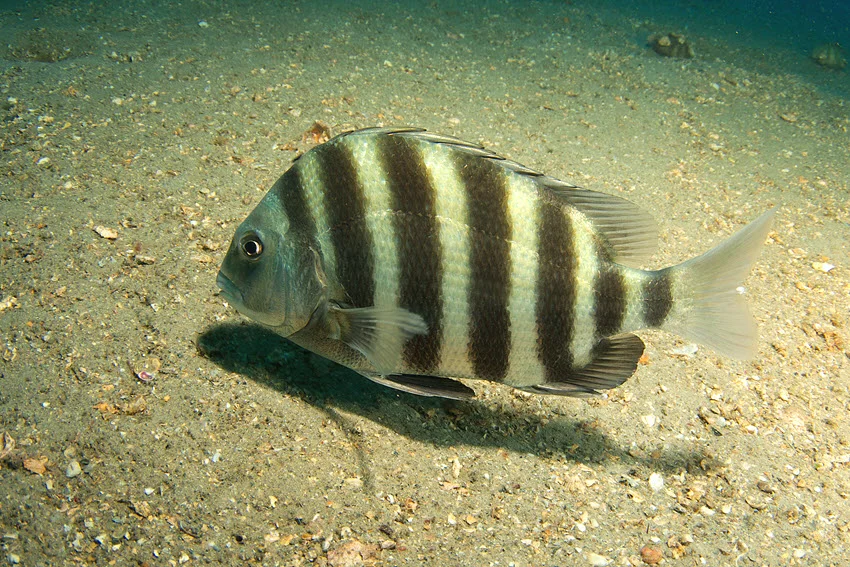
In the waters of the Steinhatchee, the Sheepshead is hunted for its delicious meat and stubborn fight, which contributed to its village name. They have distinctive black and white bodies and prominent teeth reminiscent of sheep's. They vary significantly in size, ranging from 1 to 2 feet in length and weighing up to several pounds.
Their peak season is during the colder months, from December to February. Since their nature also includes skilfully stealing bait from the hook, it is best to catch them bottom fishing with live or cut bait such as crabs, shrimp, or clams. This species is anything but boring. It is cunning and not easily predictable, so hunting it requires finesse.
If, by any chance, the native species aren't challenging enough for you, don't worry; there are also cunning migratory ones that wander from offshore seasonally. Here's who you can meet in Steinhatchee.
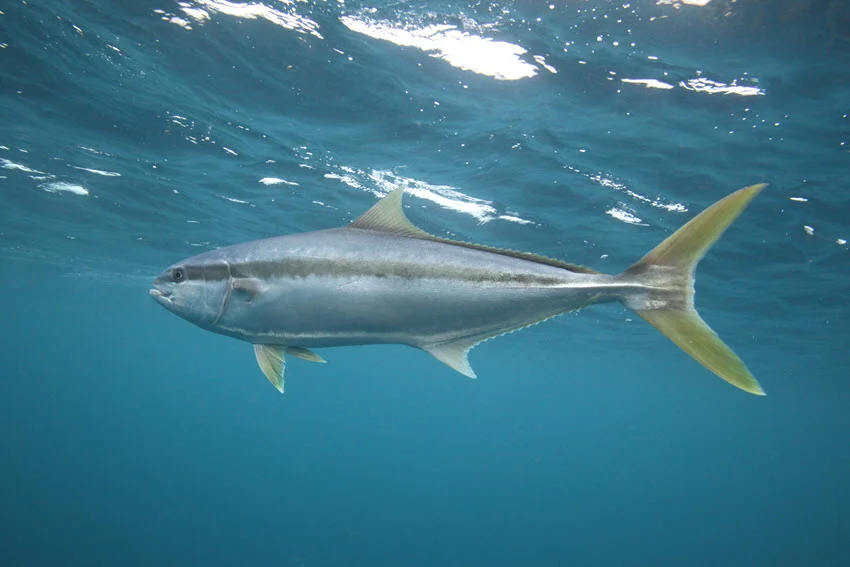
In the waters of Steinhatchee, Kingfish, also known as King Mackerel, is one of the favorite migratory species. Like all deep water creatures, it fights aggressively, quickly, and elegantly. They have lovely, streamlined bodies with blue-green backs. It can grow 3 to 5 feet and weigh 30 pounds or more.
These predators prefer coastal reefs, wrecks, and structures where mullets, herring, and sardines feed. The prime season for Kingfish in Steinhatchee is from late spring to early fall, coinciding with their annual migration along the Gulf. Kingfish are traditionally caught trolling with rigged or artificial lures, live baiting with cigars or menhaden, and drifting.
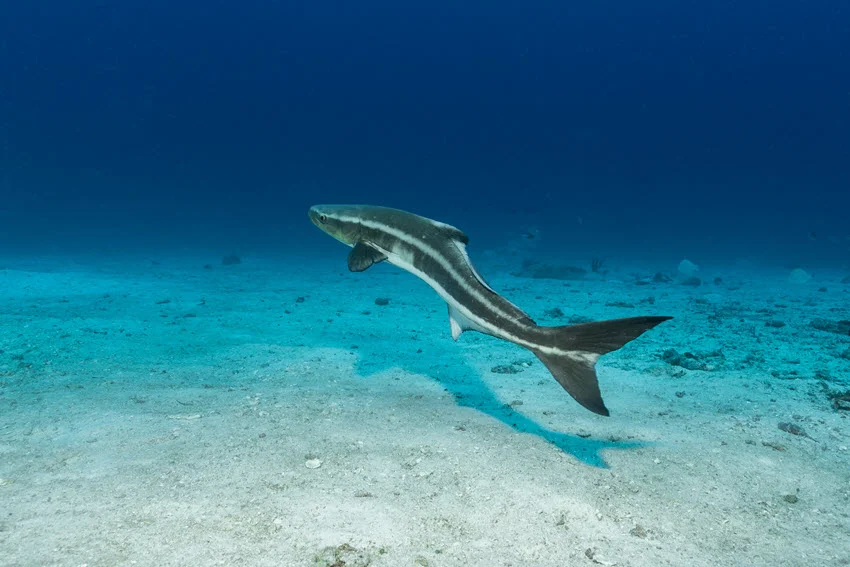
Cobia is a very warlike species, which shows in its overall appearance. They have broad heads and dark side stripes, and they come in huge sizes, ranging from 4 to 6 feet and weighing more than 50 pounds. They are strong but have lovely meat.
Cobia are bottom dwellers, reef dwellers, and wrecks, and in Steinhatchee, you will encounter them in the spring and early summer months when they migrate through these waters. Anglers targeting Cobia use bottom fishing around structures, trolling with baits such as eels, crabs, or minnows. Success in Cobia fishing depends mostly on astute observation and precise presentation, although the battle and the fight begin only when they bite.
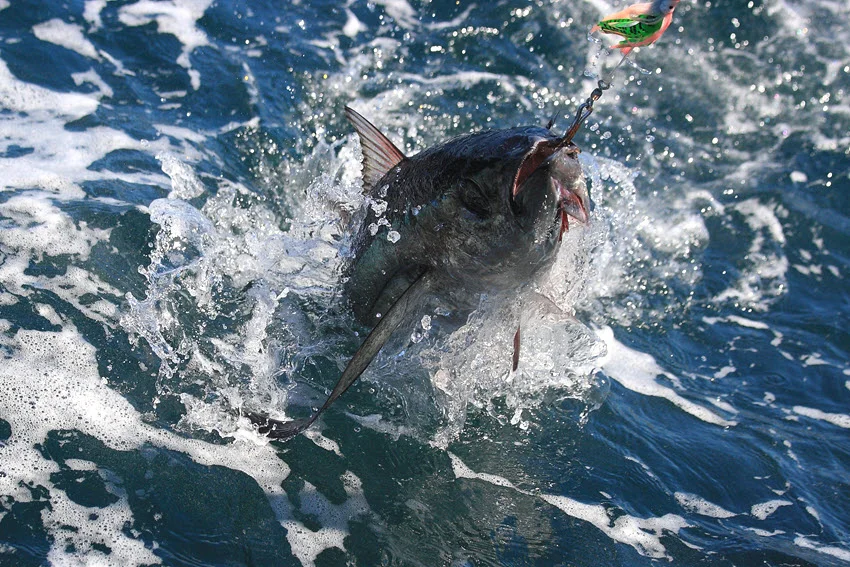
Many species of Tuna visit these waters in their migratory movements, but the Blackfin Tuna stands out due to its powerful runs, impressive size, and delicious meat. Its body resembles a streamlined torpedo, with a metallic blue-black color on its back and a silvery-white belly. They range in size from 20 to 40 pounds, although specimens exceeding 40 pounds are not uncommon.
Considering its size, combativeness, and demand, trolling with lures, casting poppers or jigs, and breaking with bait or squid have proven to be the most successful techniques. With speed, strength, and culinary appeal, the Bluefin Tuna is a top-tier species that lures anglers.
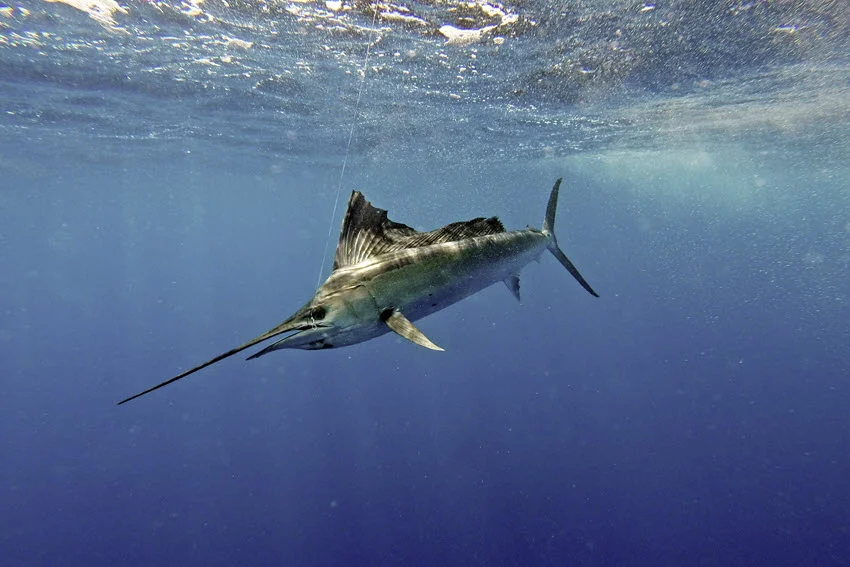
In the azure waters surrounding Steinhatchee, Sailfish is one of the most dominant species. It rules the depths of the sea, with sail-like dorsal fins, blue and silver hues, and a long, slender body. It is graceful and powerful at the same time. It is not uncommon for specimens to weigh more than 200 pounds, which is why, among other factors, they hold their current status.
If you're targeting Sailfish, look for it along the edges of the Gulf Stream, where schools of bait such as mullet, herring, and flying fish are running. As you've probably guessed by now, the fishing is mostly trolling with rigged baits, live baits with fast offerings such as ballyhoo or glasses, and setting up kites or dredges to attract strikes.
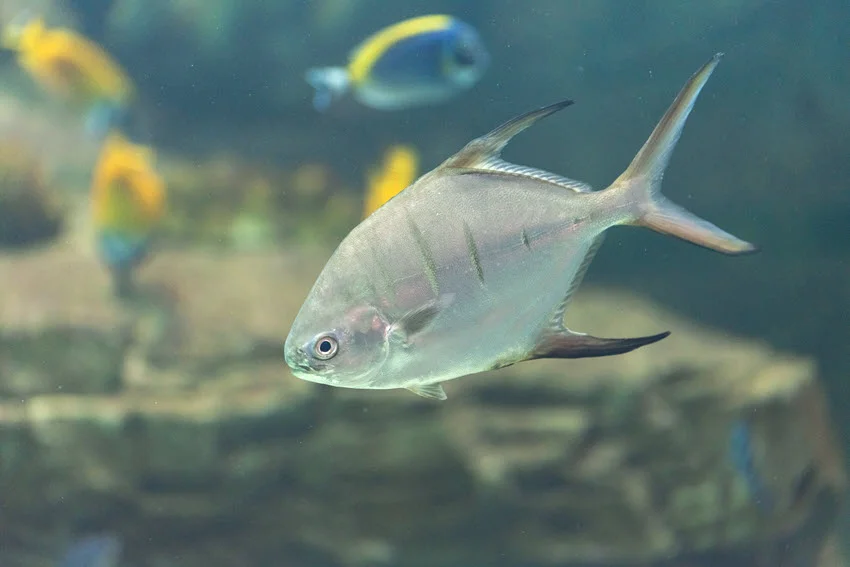
Permit is often called the "Poor Man's Tarpon" because it resembles its larger and somewhat more famous cousin. This species can grow from 10 to 30 pounds and usually spawns in shallow flats, seagrass beds, and coastal reefs. It migrates several times, but they are most abundant during the warmer months when they congregate in shallow waters.
The most prevalent techniques are casting with imitation crabs or shrimp and presenting live bait such as freshly caught crabs or shrimp. When the fish bites and realizes the mistake, the Permit starts a relentless fight, full-on with powerful runs, stubborn resistance, and the ability to test the skill and patience of even the most experienced anglers.
Although Steinhatchee is a relatively small fishing village, this does not mean that it lacks good fishing locations! On the contrary, Steinhatchee and its surroundings are known for just that. So, let's get to know them!
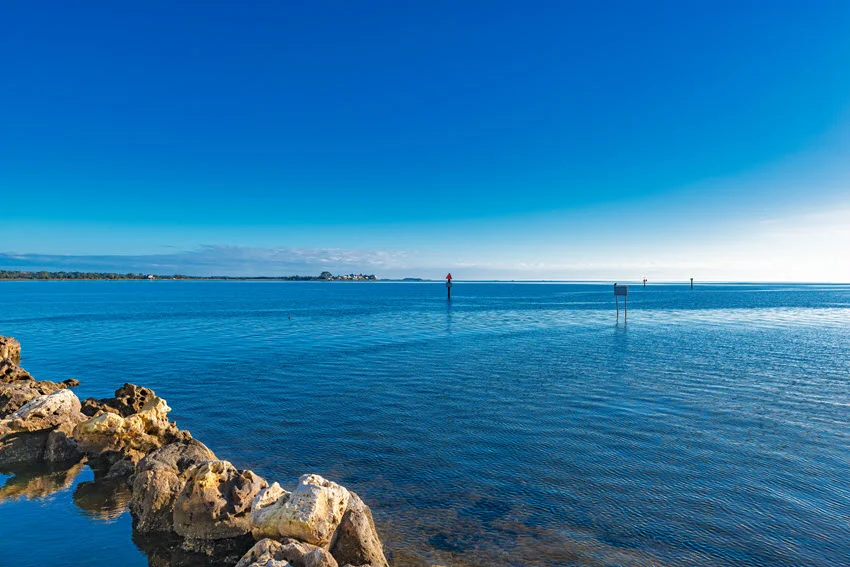
Deadman's Bay, although not very flatteringly named, doesn't let it put you off. This bay is a dynamic fishing spot renowned for its rich biological diversity, featuring a mix of river and ocean species. It is a short drive from Steinhatchee, and anglers here can expect encounters with Kingfish, Cobia, Amberjack, and Black Bream.
Access to Deadman's Bay is good and approachable, with various boat launch points and solid fishing grounds for shore anglers. You can camp or come for a picnic, enjoy swimming, or bring friends and family. Deadman's Bay simply calls for everyone.
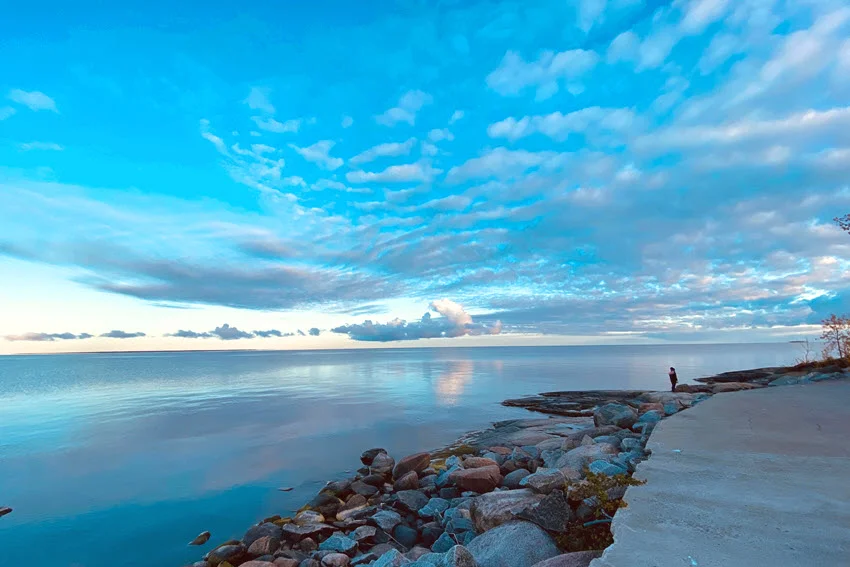
There are plenty of rocky points and underwater structures along the Steinhatchee shoreline if you like to fish from a slightly more risky position while also being very close to the habitat of many species. These natural rocky outcrops provide an ideal habitat for fish, including Sheepshead, Snapper, and Flounder.
Rocky points and submerged structures have always been meeting points for many fish species, as they can seek shelter from predators and ambush prey. Of course, you will need a boat, kayak, or larger vessel, although some can be accessed directly from the shore. Whatever your choice, beware because not all are secure. If you like uneven terrain and a touch of risk, Steinhatchee offers you the option to cast from there.
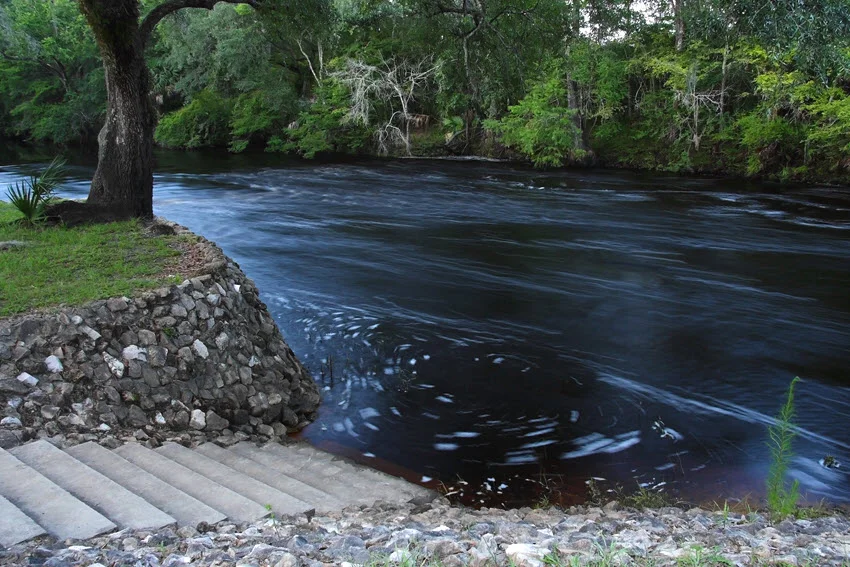
The Steinhatchee River is a mighty and graceful river that offers the opportunity to quickly transition from a beach environment to a wooded and freshwater setting. This river is rich in habitats ranging from vast flats to natural reefs and sandbars. This also means it is a refuge for many fish species, so even though the river is here, you will find Redfish, Grouper, and Cobia.
The river is accessible and available for shore, kayak, and boat fishing, meaning the possibilities are almost endless. Additionally, the Steinhatchee River, along its coast, is an ideal fishing environment for those who prefer shady areas with limited sun exposure.
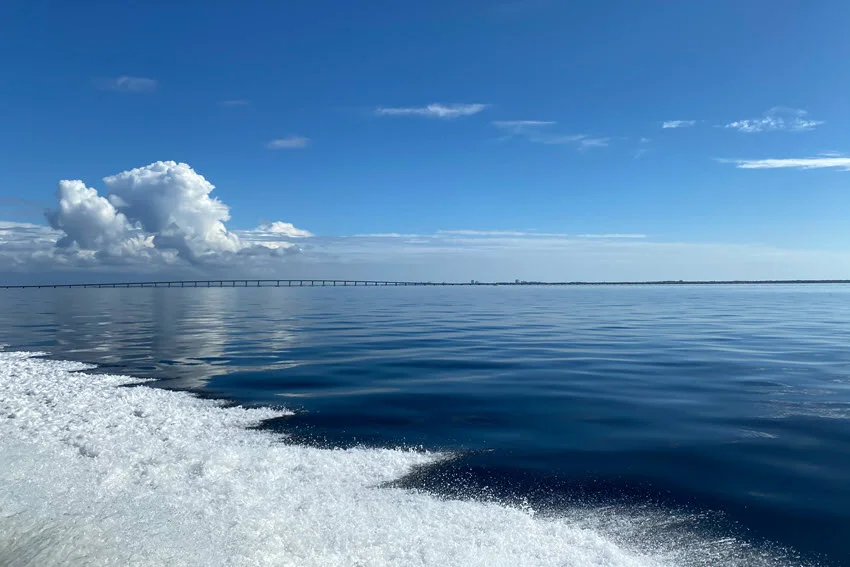
The Gulf of Mexico, that beautiful, vast expanse of azure waters and distant horizons, has a reputation as an angler's paradise. It is also the region surrounding Steinhatchee and is known, among other things, for the artificial reefs located approximately 10 miles offshore. You can pursue all kinds of Snapper there, including the coveted Red and Mangrove varieties and Groupers, Sheepshead, Kingfish, and many others.
The deeper waters of the bay are accessible to those with boats or charters. If you plan to go on further trips and feel the ocean's power, then the Gulf of Mexico is worth noting. It is essential for Florida for many reasons, especially fishing; the Gulf of Mexico is also a sanctuary for Florida anglers.
Many different water areas, with an even more prosperous underwater world, offer the opportunity to explore many techniques. We have selected those that stand out in frequency and compatibility with powerful water systems.
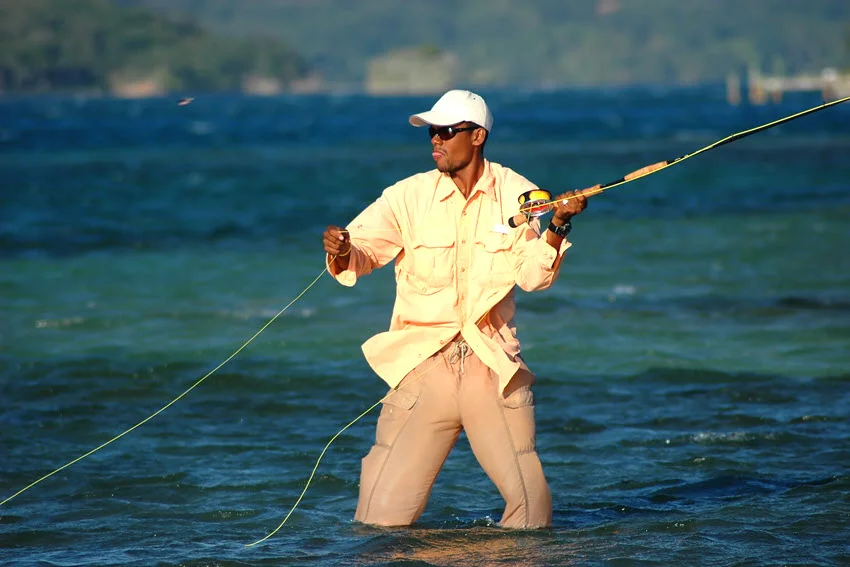
Sight fishing in Steinhatchee is a widespread technique, as there are plenty of freshwater and saltwater areas to explore with this approach. Although sight fishing is often thought to be reserved only for wading and shallower water, you can practice it from a kayak or boat. This technique relies on focused, sharp observation and extremely quiet and stealthy approaches to spot fish cruising or swimming in clear, shallow waters.
At first, anglers use polarized glasses to look for signs of movement, disturbances, or tell-tale shadows of fish. Such glasses are a must-have because they cut through surface glare, improving visibility in the water and allowing anglers to spot fish more efficiently.
Once a fish is spotted, anglers must carefully position themselves to make an accurate cast without spooking it. The fish are mainly Redfish, Speckled Trout, and Snook. The essence of the technique is patience, stealth, and precise casting. In addition, the method quickly engages the mind and all the senses, which makes it even more challenging and attractive.
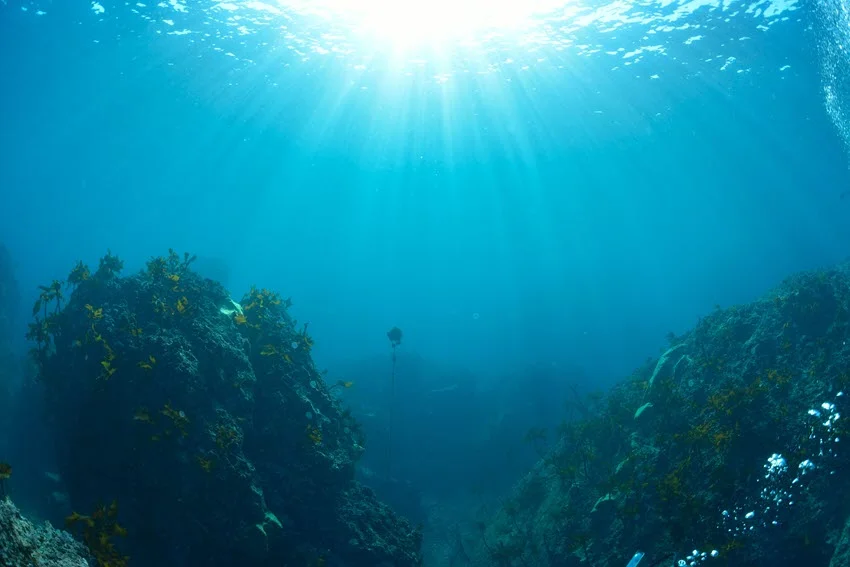
Bottom fishing is a popular and effective technique because it allows access to and fishing not only on the ocean bottom but also on various levels and structures leading to the bottom.
Bottom fishing involves presenting bait on or near the ocean floor, attracting species such as Groupers and Flounder. These are often found around reefs, wrecks, rock outcrops, and other underwater structures. The equipment can differ depending on the depth at which you plan to fish, with the Carolina rig often used as a fish finder.
Baits are mainly live or cut bait fish, squid, shrimp, and artificial bait. Bottom fishing is a practical and highly functional method, and it is also very popular.
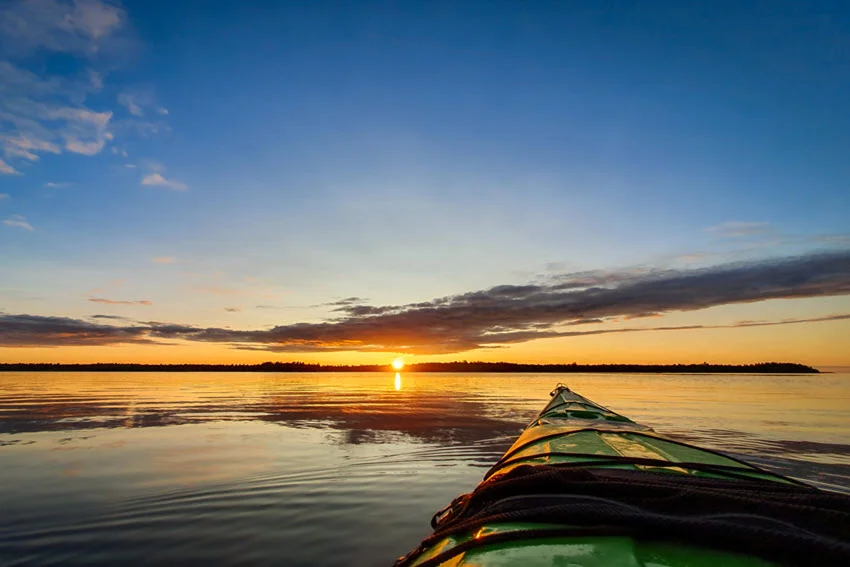
Kayak fishing combines the thrill of fishing with the serenity of paddling, rounding it off with exploration and enjoying the view. Thanks to its intricate network of shallow flats, winding rivers, and coastal reefs, Steinhatchee is a veritable kayak angler's playground. With these vessels, you can easily access remote and secluded places that are inaccessible to larger boats.
In Steinhatchee, you can fish for Redfish, Trout, Tarpon, or Snook and explore the freshwater creeks by kayak. Wearing a personal flotation device (PFD) and being aware of weather conditions, tidal currents, and potential hazards are essential. Overall, kayak fishing in Steinhatchee is fun, relaxing, and deeply interactive with nature.
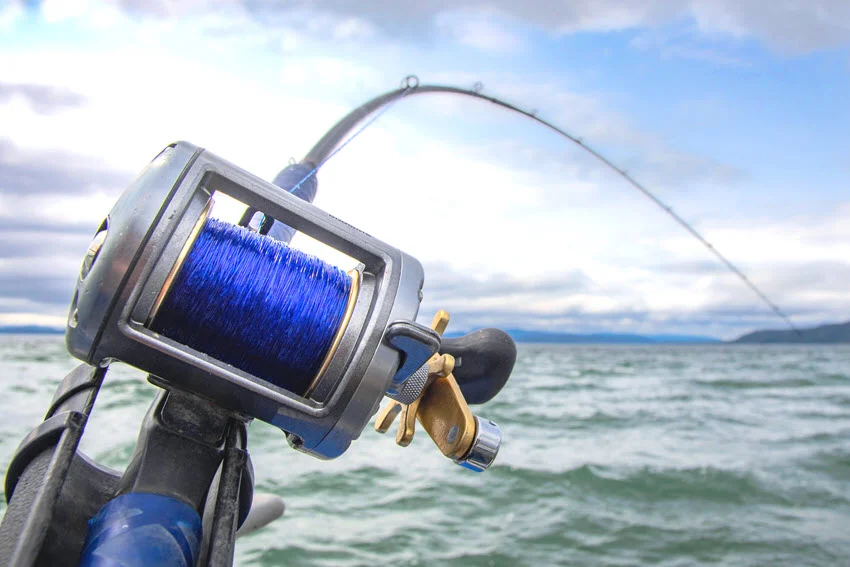
Trolling is generally reserved for hunting pelagic species and going to the open sea. If you want to troll the waters of the Gulf of Mexico in Steinhatchee, you must have the right equipment and know what you are doing, or you can seek the help of a charter and a guide. Trolling involves pulling lures behind a moving boat at varying speeds. In this way, the target fish species is animated and inspired to action.
You can catch Spanish Mackerel, Mahi Mahi, Sailfish, or Marlin. Trolling involves using specialized trolling rods and reels equipped with sinkers, planers, or other supports to place baits. It is essential to present the bait well, that is, to successfully combine the speed of the boat and the skill of handling the rods. Trolling speed is another critical factor that significantly affects the bait's action. Everything should be adapted to the target species.
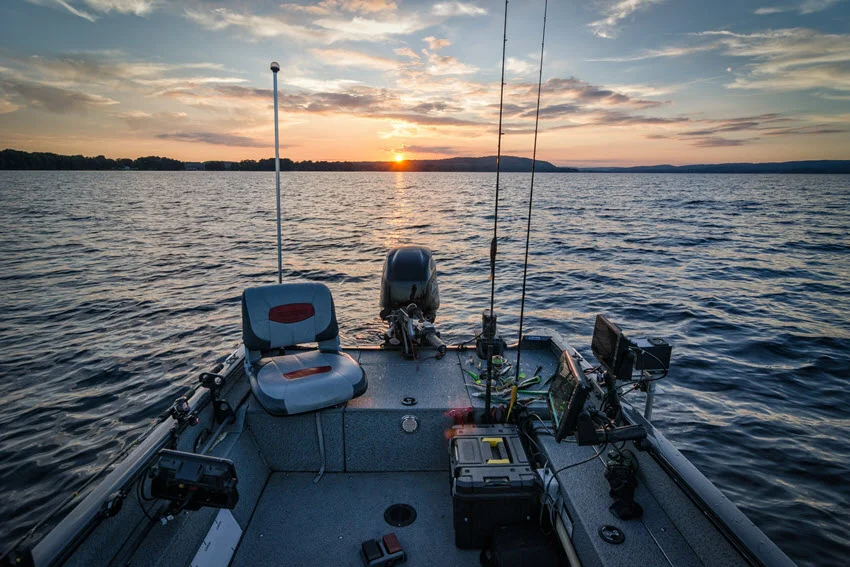
Jigging is a highly dynamic and multifunctional technique used both on the coast and at sea. The method involves pulling a weighted bait vertically up and down through various levels of the water column, with speed and movements adjusted to inspire the target fish species to strike.
In Steinhatchee, jigging is typically used to target deeper-water species, such as Grouper or Kingfish, which inhabit reefs, wrecks, and ledges. You will need specialized rods and reels equipped with quick retrieves and heavy braided lines for jigging.
You can vary by incorporating rises, falls, jerks, and pauses. When you present the bait, you're almost dancing and putting on a show, so it's no wonder it's called jigging. It's exciting and demanding, almost like a complex game, but with the possibility of bringing valuable gifts.
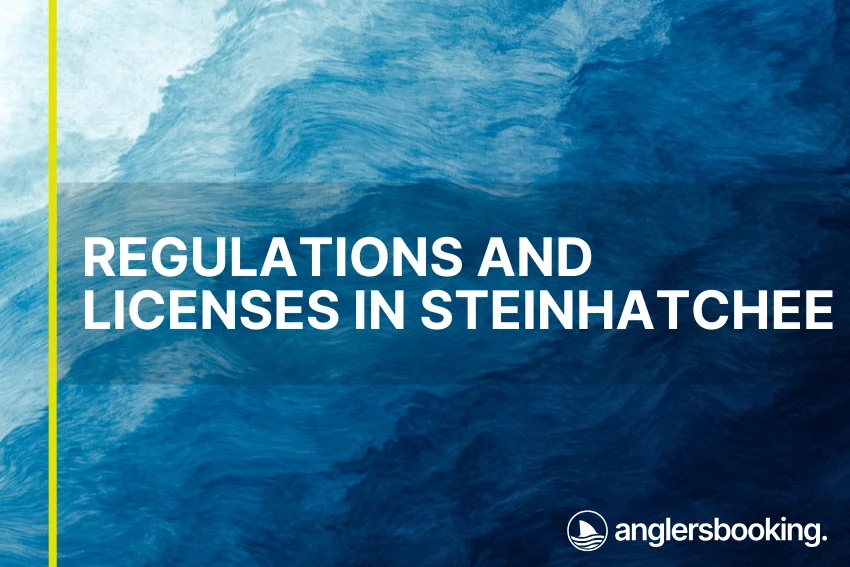
Understanding fishing regulations in an area is crucial for protecting fish populations and ecosystems and promoting responsible angling practices.
Anglers Booking team
It is essential to follow all fishing regulations in Steinhatchee and obtain the necessary licenses, depending on the type of fishing and the species you wish to catch. All necessary information and permits can be found on the official website of the Florida Fish and Wildlife Conservation Commission (FWC) or at authorized agents. In principle, anyone who intends to engage in any fishing activity and is over 16 must possess a valid Florida fishing license.
Additionally, it is essential to adjust your fishing activities and adhere to the bag and size limits for various species. Certain species are protected, so they must be released if they are accidentally caught and held. Awareness of seasonal closures prevents fishing during critical spawning periods and preserves the optimal abundance of a particular species.
By observing all of the above, you will contribute to preserving a crucial environment and avoid fines and potential legal issues.
We have provided a wealth of high-quality information and exciting insights into what fishing in Steinhatchee and its surroundings is like. While it may seem modest compared to other Florida fishing destinations, seasoned anglers know that a town built on fishing often holds some of the best-kept secrets. Whatever your thoughts on our guide, feel free to share them in the comments below.
Lastly, if you have already visited the spot and have photos from the location, feel free to share them so we can all work together to make our fishing community more authentic and inclusive. Happy fishing!

The expert copywriters at Anglers Booking have meticulously crafted this article. Our dedicated team of writers provides valuable insights and information to enhance your angling experience.
Embark on unforgettable fishing adventures with us at Anglers Booking.
book your charterOctober 17, 2025
October 15, 2025
October 10, 2025
October 11, 2025
October 4, 2025
September 29, 2025
September 25, 2025
September 21, 2025

You're now part of our exclusive community. Get ready for premium content and updates straight to your inbox.
close
Subscribe to our newsletter and receive a selection of cool articles every week.
Please enter a valid email address.

Be the first to know when we're back in action.
Please enter a valid email address.
Leave a Comment
Your email address will not be published. Required fields are marked *
Thank you for your comment! It has been submitted for review and will appear on the site shortly.